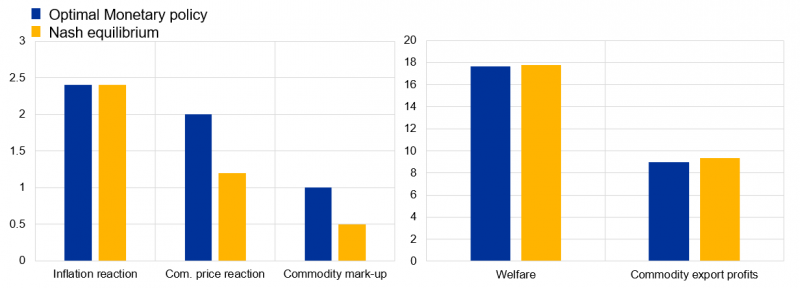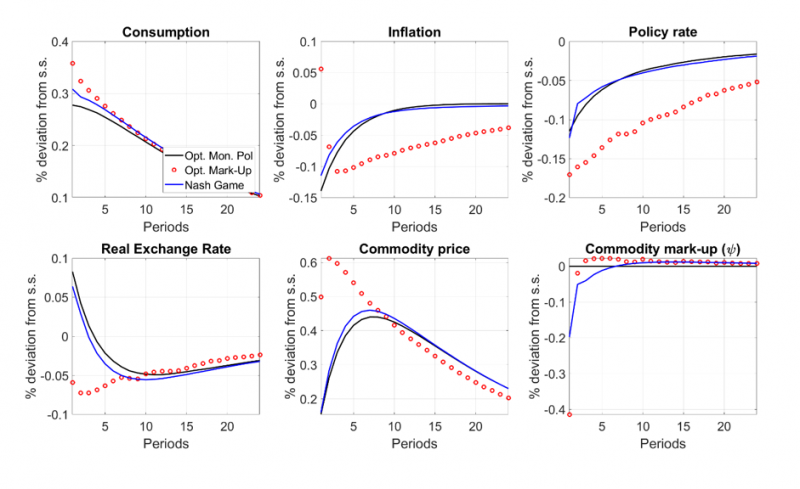



Blanchard, O. J. and Galì, J. “The Macroeconomic Effects of Oil Price Shocks: Why are the 2000s so different from the 1970s?”. In International Dimensions of Monetary Policy, NBER Chapters, pages 373–421. National Bureau of Economic Research, Inc, 2007.
Filardo, A. J., Lombardi, M. J., Montoro, C., and Ferrari, M. M. “Monetary Policy, Commodity Prices, and Misdiagnosis Risk”. International Journal of Central Banking, 16 (2):45–79, 2020.
Nash, J. “Non-cooperative Games”. Annals of Mathematics, 54(2), 1951.
This behaviour is typically documented for OPEC, see The Economist, “OPEC defies Joe Biden with a big output cut”, 5th October 2022 and Alonso Alvarez, I., Di Nino, V. and Venditti, F. “Strategic interactions and price dynamics in the global oil market”, Working Paper Series 2368, European Central Bank, 2020.
Ferrari Minesso, M. & Pagliari, M, S. “DSGE Nash: solving Nash games in macro models”. Working Paper Series 2678, European Central Bank, 2022. The toolkit is available on the authors’ websites.
Nakov, A. and Pescatori, A. “Oil and the Great Moderation”. Economic Journal, 120 (543):131–156, 2010.